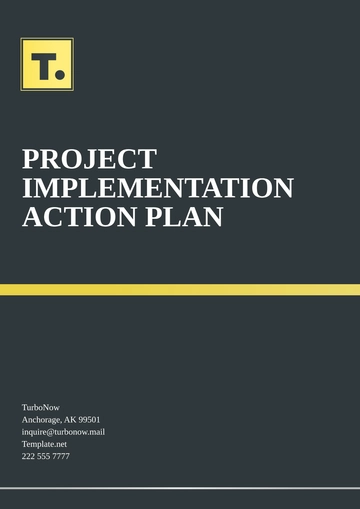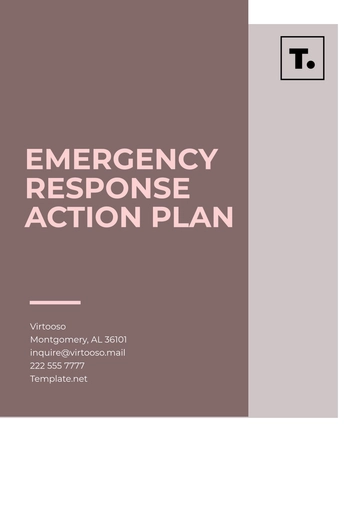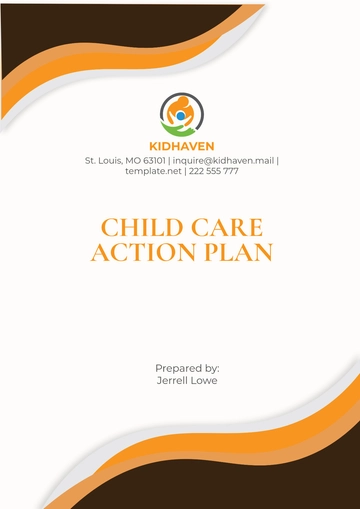Free Wildlife Action Plan

I. Introduction
In collaboration with stakeholders from the Wildlife Alliance for the Preservation of Northern Habitats (W.A.P.N.H.), [YOUR COMPANY NAME] presents this Wildlife Conservation Action Plan aimed at prioritizing conservation efforts for the protection and management of wildlife and their habitats within the Northern Rainforest Reserve.
II. Background
The Northern Rainforest Reserve, spanning over 500,000 acres, is known for its rich biodiversity, hosting a diverse array of wildlife species and unique ecosystems. However, increasing human activities such as illegal logging, habitat destruction for agriculture, pollution, and climate change pose significant threats to the survival of these species and the health of their habitats.
III. Objectives
Objective | Description |
|---|---|
Assessment | Conduct a comprehensive assessment of wildlife species and habitats to identify conservation priorities. |
Prioritization | Prioritize conservation actions based on ecological significance, vulnerability, and conservation status of species and habitats. |
Engagement | Engage with local communities, stakeholders, and decision-makers to raise awareness and foster support for wildlife conservation initiatives. |
IV. Conservation Strategies
Strategy | Description |
|---|---|
Habitat Protection and Restoration |
|
Species Management |
|
Sustainable Development |
|
V. Action Plan
A. Baseline Assessment (Year 2051)
Task | Description |
|---|---|
Conduct surveys | Conduct comprehensive surveys to assess wildlife species and habitats, including population surveys, habitat mapping, and threat assessments. |
Data compilation | Compile data on species distributions, population trends, habitat conditions, and human activities impacting wildlife and their habitats. |
B. Prioritization Workshop (Year 2052)
Task | Description |
|---|---|
Stakeholder workshop | Organize a workshop involving stakeholders to prioritize conservation actions based on assessment findings, expert input, and stakeholder feedback. |
Develop prioritized list | Develop a prioritized list of species and habitats for conservation focus, considering conservation status, ecological importance, and feasibility of conservation actions. |
C. Conservation Implementation (Ongoing)
Task | Description |
|---|---|
On-the-ground actions | Implement conservation actions, including habitat restoration projects, species conservation initiatives, and community-based programs, according to the prioritized action plan. |
Monitoring and evaluation | Monitor and evaluate the effectiveness of conservation interventions through regular assessments, adaptive management, and stakeholder engagement. |
VI. Monitoring and Evaluation
A. Data Monitoring (Ongoing)
Task | Description |
|---|---|
Establish monitoring program | Establish a monitoring program to track changes in wildlife populations, habitat conditions, and threats over time, using standardized protocols and methodologies. |
Data analysis | Regularly collect and analyze monitoring data to assess the effectiveness of conservation actions, identify emerging threats, and inform adaptive management decisions. |
B. Evaluation (Year 2055)
Task | Description |
|---|---|
Progress assessment | Evaluate the progress and effectiveness of conservation actions against predefined objectives and targets, including assessing changes in wildlife populations, habitat quality, and threats. |
Plan review | Conduct a comprehensive review of the Wildlife Conservation Action Plan to identify successes, challenges, and opportunities for improvement, and adjust conservation strategies and priorities accordingly. |
VII. Conclusion
Through collaborative efforts and targeted conservation actions outlined in this Wildlife Conservation Action Plan, we aim to safeguard the rich biodiversity of the Northern Rainforest Reserve for future generations to enjoy and appreciate, ensuring the long-term survival of wildlife and their habitats in this ecologically significant region.
- 100% Customizable, free editor
- Access 1 Million+ Templates, photo’s & graphics
- Download or share as a template
- Click and replace photos, graphics, text, backgrounds
- Resize, crop, AI write & more
- Access advanced editor
Unlock the potential of conservation efforts with our Wildlife Action Plan Template from Template.net. Tailored for environmental enthusiasts and organizations, this customizable and editable template streamlines your strategy to safeguard biodiversity. Crafted with precision and powered by an AI Editor Tool, it ensures seamless planning and execution. Elevate your wildlife preservation initiatives effortlessly.





























